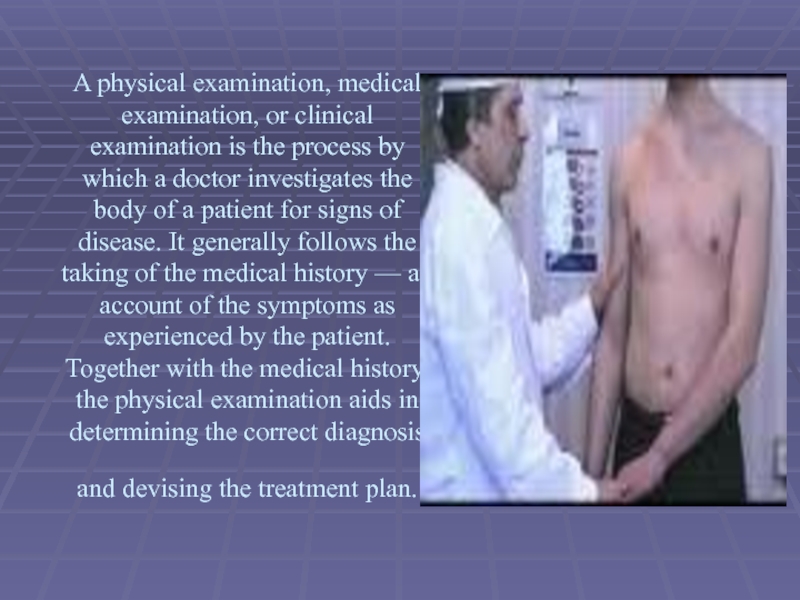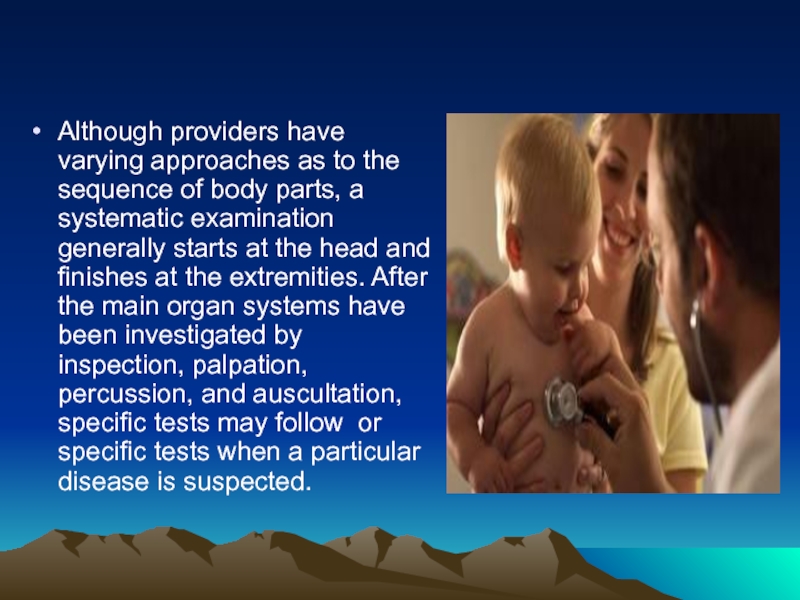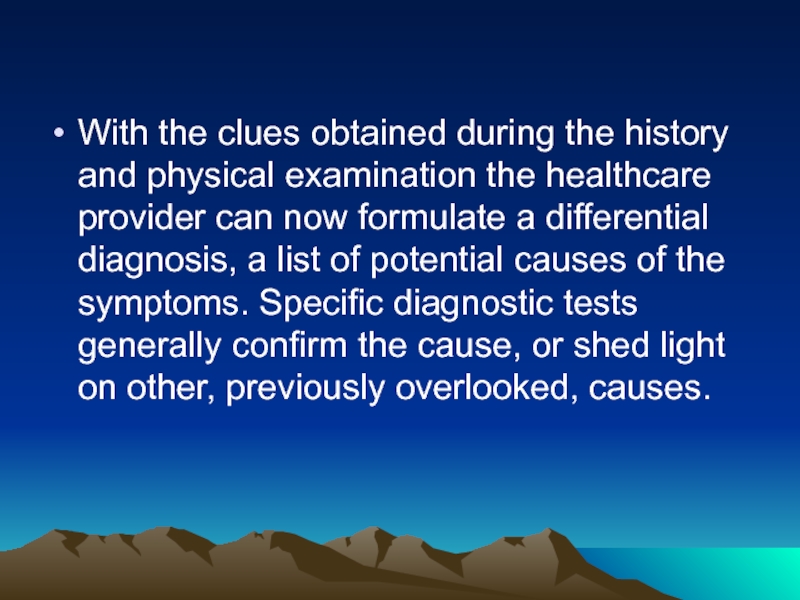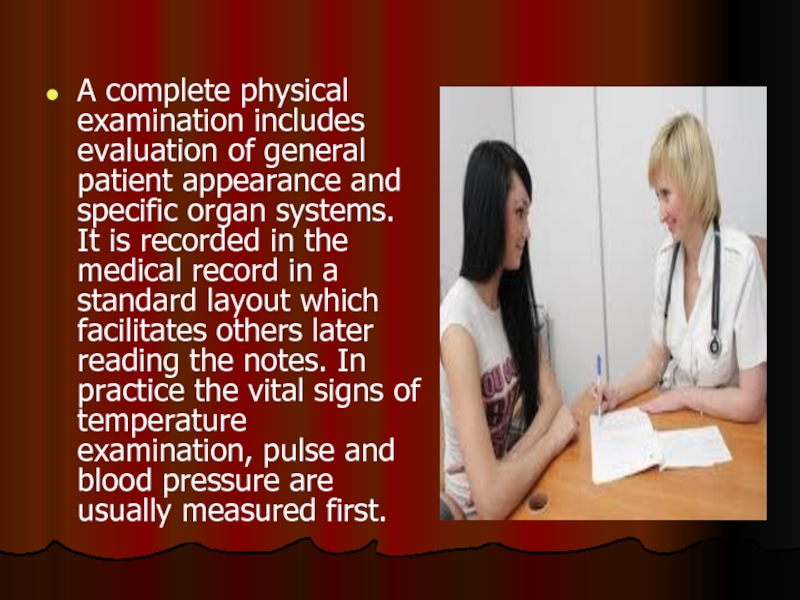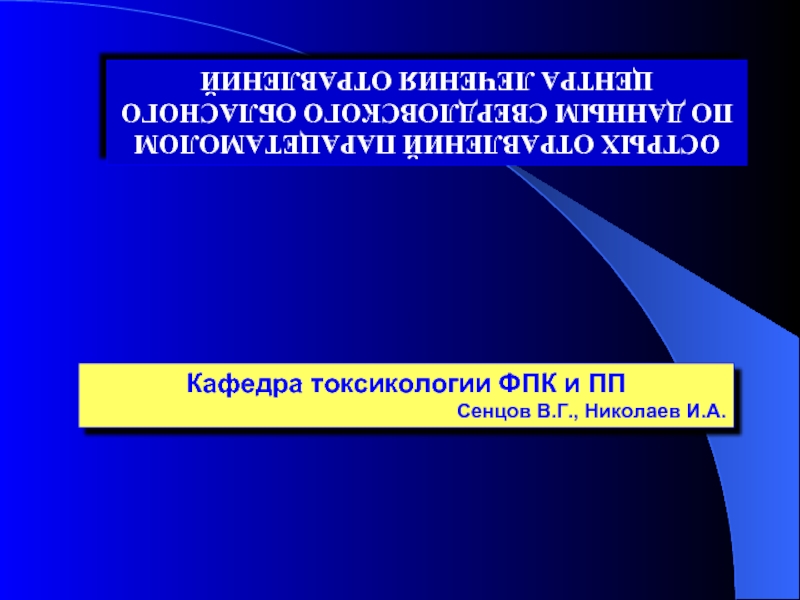Prepared by: Tuleubekov Magzhan
Group: 103 B
Faculty: General medicine
Checked by: Kosbatyrova Nauat
Almaty 2012
- Главная
- Разное
- Дизайн
- Бизнес и предпринимательство
- Аналитика
- Образование
- Развлечения
- Красота и здоровье
- Финансы
- Государство
- Путешествия
- Спорт
- Недвижимость
- Армия
- Графика
- Культурология
- Еда и кулинария
- Лингвистика
- Английский язык
- Астрономия
- Алгебра
- Биология
- География
- Детские презентации
- Информатика
- История
- Литература
- Маркетинг
- Математика
- Медицина
- Менеджмент
- Музыка
- МХК
- Немецкий язык
- ОБЖ
- Обществознание
- Окружающий мир
- Педагогика
- Русский язык
- Технология
- Физика
- Философия
- Химия
- Шаблоны, картинки для презентаций
- Экология
- Экономика
- Юриспруденция
Polyclinic. A physical examination, medical examination, or clinical examination презентация
Содержание
- 1. Polyclinic. A physical examination, medical examination, or clinical examination
- 2. A physical examination, medical examination, or clinical
- 3. A physical examination may be
- 4. Comprehensive physical exams of this type
- 5. While elective physical exams have become more
- 6. Although providers have varying approaches as to
- 7. With the clues obtained during the history
- 8. While the format
- 9. A complete physical examination includes evaluation of
- 10. The physician begins the examination by asking
Слайд 2A physical examination, medical examination, or clinical examination is the process
by which a doctor investigates the body of a patient for signs of disease. It generally follows the taking of the medical history — an account of the symptoms as experienced by the patient. Together with the medical history, the physical examination aids in determining the correct diagnosis and devising the treatment plan.
Слайд 3 A physical examination may be provided under health insurance
cover, required of new insurance customers, or stipulated as a condition of employment. In the United States, physicals are also marketed to patients as a one-stop health review, avoiding the inconvenience of attending multiple appointments with different healthcare providers
Слайд 4 Comprehensive physical exams of this type are also known as
executive physicals, and typically include laboratory tests, chest x-rays, pulmonary function testing, audiograms, full body CAT scanning, EKGs, heart stress tests, vascular age tests, urinalysis, and mammograms or prostate exams depending on gender. The executive physical format was developed from the 1970s by the Mayo Clinic and is now offered by other health providers, including Johns Hopkins University, EliteHealth and Mount Sinai in New York City.
Слайд 5While elective physical exams have become more elaborate, in routine use
physical exams have become less complete. This has led to editorials in medical journals about the importance of an adequate physical examination. In addition to the possibility of identifying signs of illness, it has been described as a ritual that plays a significant role in the doctor-patient relationship. Physicians at Stanford University medical school have introduced a set of 25 key physical examination skills that were felt to be useful.
Слайд 6Although providers have varying approaches as to the sequence of body
parts, a systematic examination generally starts at the head and finishes at the extremities. After the main organ systems have been investigated by inspection, palpation, percussion, and auscultation, specific tests may follow or specific tests when a particular disease is suspected.
Слайд 7With the clues obtained during the history and physical examination the
healthcare provider can now formulate a differential diagnosis, a list of potential causes of the symptoms. Specific diagnostic tests generally confirm the cause, or shed light on other, previously overlooked, causes.
Слайд 8 While the format of examination as listed
below is largely as taught and expected of students, a specialist will focus on their particular field and the nature of the problem described by the patient. Hence a cardiologist will not in routine practice undertake neurological parts of the examination other than noting that the patient is able to use all four limbs on entering the consultation room and during the consultation become aware of their hearing, eyesight and speech.
Слайд 9A complete physical examination includes evaluation of general patient appearance and
specific organ systems. It is recorded in the medical record in a standard layout which facilitates others later reading the notes. In practice the vital signs of temperature examination, pulse and blood pressure are usually measured first.
Слайд 10The physician begins the examination by asking about the patient's symptoms.
The patient may be asked to describe the symptoms and how long he or she has been experiencing them. If the patient is in pain, information is collected about the location, type, and duration of the pain. Other symptoms that may be present but may not have been noticed by the patient must be explored.

